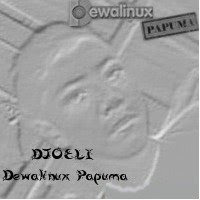Linux
LinuxLinux Tux.svg
Tux, the penguin, the Linux mascot
Family OS: Unix
Recent publications
Kernel type: Monolithic
License: GNU General Public License and other
Status: Active

Linux (pronounced or lɪnəks / lɪnʊks /) is the name given to the Unix operating system. Linux is an example of development of free software and open source principal. Like the free software and open source more generally, the Linux source code can be changed freely used and redistributed by anyone [2].
The name "Linux" is derived from the name of its creator, introduced in 1991 by Linus Torvalds. Systems, equipment and library systems usually come from the GNU operating system, which was published in 1983 by Richard Stallman. The GNU contribution is the basis for the alternative name GNU / Linux [3].
Linux has always been known for its use in servers, and backed by major computer companies like Intel, Dell, Hewlett-Packard, IBM, Novell, Oracle, Red Hat and Sun Microsystems. Linux is used as the operating system in various types of hardware, including desktop computers, supercomputers, [4], and embedded systems such as electronic book readers, video game systems (PlayStation 2, PlayStation 3 and Xbox [5]) phone and router. These observers believe that the success of technical information on Linux because Linux does not depend on vendors (vendor independent), low operating cost and high compatibility of any free version of UNIX, as well as security and stability high compared to other operating systems such as Microsoft Windows. These characteristics are evidence of the benefits of the development model of open source software (opensource software).
Linux operating system known as Linux distributions (Linux distribution) or a general Linux distribution already includes the device software support, such as web servers, programming languages, databases, desktop display (desktop environment) such as GNOME, KDE and Xfce also has a package of office applications (office suite), such as OpenOffice.org, KOffice, Abiword, Gnumeric e.
History
the Unix operating system developed and implemented in 1960 and was released in 1970. Factor availability and portability meant that it could be used, copied and modified extensively by academic institutions and businessmen.
The GNU Project, started in 1984, aims to create an operating system compatible with Unix and complete and totally composed of free software. [6] In 1985, Richard Stallman created the Free Software Foundation and developed the GNU General Public License (GNU General Public License or GPL). Most programs provided by an operating system (such as libraries, compilers, text editors, a Unix shell and a windowing system) were completed in early 1990, although elements of low-level device drivers, and kernel daemon is not yet finished at that time [7]. Linus Torvalds has said that if the GNU kernel had been available at that time (1991), did not decide to write his own [8].
//
Labels:
LINUX'S
// //
You can replace this text by going to "Layout" and then "Page Elements" section. Edit " About "
Run Ubuntu on your Android Phone!
gfgfgfgfg
Translate
TAG
online
PoStInG
-
▼
2010
(34)
-
▼
July
(32)
- EASY WAYS TO MAKE LINUX BASED WARNET
- How to Install LINUX KNOPPIX
- How to Install Gentoo Linux
- How to Install Slackware Linux 11
- How to Install Mandriva Linux
- How to Install SUSE LINUX
- HOW to install Linux Freespire
- How to Install a USB WITH LINUX MINT
- How to Install PC LINUX
- How to Install Puppy Linux
- How to Install a Sabayon Linux
- How to Install TURBO LINUX
- How to Install Damn Small Linux
- How to Install DEWALINUX Papuma
- HOW to install Linux Edubuntu
- HOW to install Linux Kubuntu
- How to Install BlankOn Linux
- How to Install ARCH LINUX
- HOW to install Linux Xubuntu
- How to Install Xandros LINUX
- How to Install MULTI DISTRO LINUX
- How to Install LINUX UBUNTU
- How to Install Linux RedHat
- HOW to install Linux CentOS
- HOW to install Linux debian
- How to Install Linux Fedora
- LINUX LOGO
- ISLAMIC LINUX
- THE TYPES OF LINUX DISTRO
- LINUX BASICS
- DIFFERENCES IN LINUX AND WINDOWS
- HISTORY OF LINUX
-
▼
July
(32)
My Profile

- WaRuNg LiNuX InFoRmAtIoN
- I'm here is an ordinary human being to develop my desire to learn Linux so I wanted to share this blog to anyone who wants to learn LINUX.























